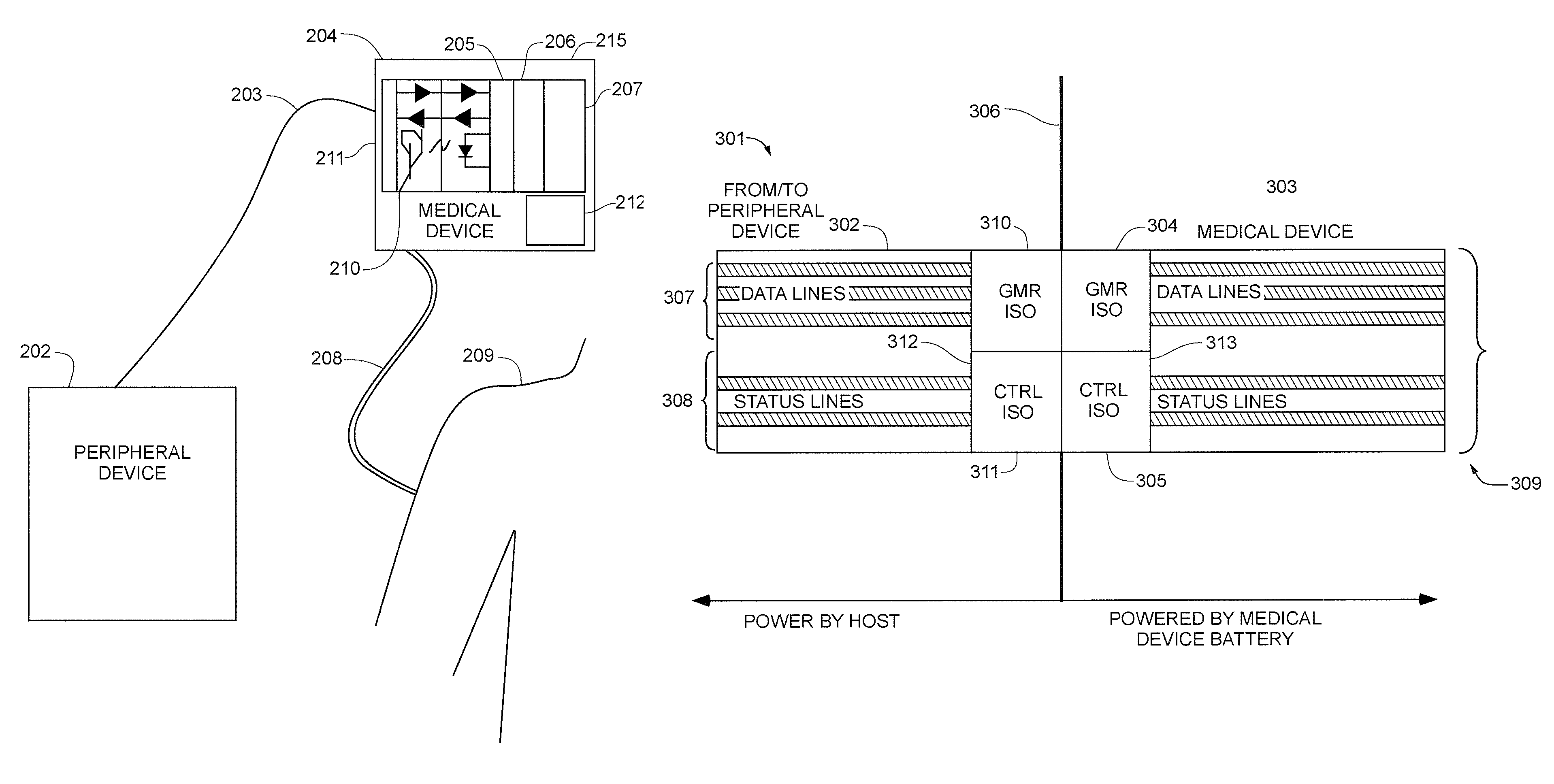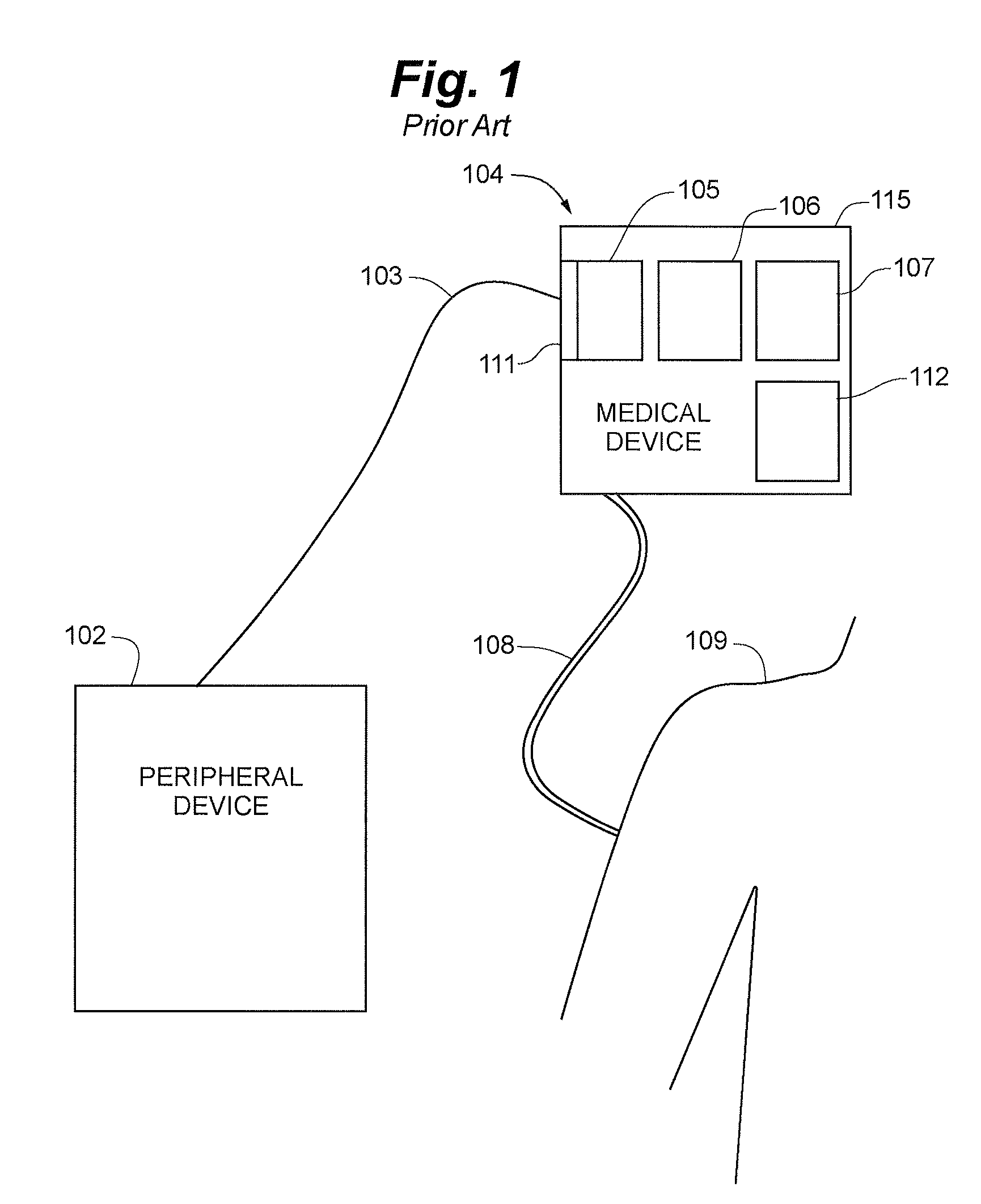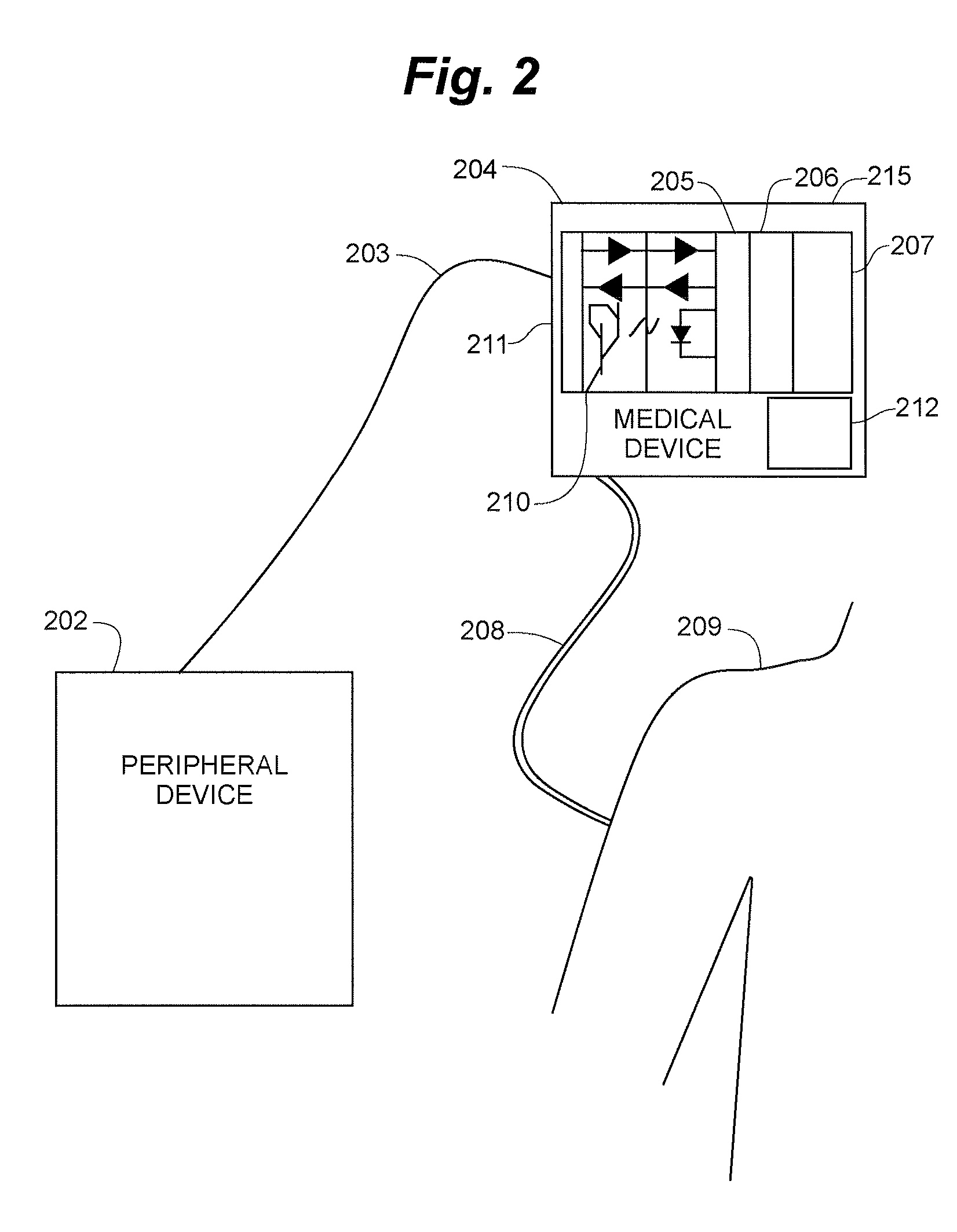Ambulatory medical device with electrical isolation from connected peripheral device
a peripheral device and ambulatory technology, applied in the field of ambulatory medical devices, can solve the problems of affecting the health of the human body, limiting the use of physicians or other users, and the removal of the device itself may be cumbersome and time-consuming, and achieve the effect of improving communication speed
- Summary
- Abstract
- Description
- Claims
- Application Information
AI Technical Summary
Benefits of technology
Problems solved by technology
Method used
Image
Examples
Embodiment Construction
[0028]FIG. 1 illustrates generally one example of an electrical medical device 104 in contact with a patient 109 and adapted to be electrically connected to a peripheral device 102. In such an embodiment, medical device 104 may be connectable to a peripheral device via an active communication cable 103. According to this example, medical device 104 may include housing 115. Housing 115 may be sized and configured to be ambulatory for patient 109. Medical device 104 may include communication circuitry 105, processor 106, and one or more medical treatment functions 107. Medical treatment functions 107 may include, for example, one or more sensors or one or more therapy delivery devices. The one or more therapy delivery devices may be adapted to deliver electrical therapy or drug therapy to patient 109. Medical device 104 also includes battery 112. Battery 112 provides electrical power to medical device 104 and has a battery ground.
[0029]In various examples, peripheral device 102 is any...
PUM
 Login to View More
Login to View More Abstract
Description
Claims
Application Information
 Login to View More
Login to View More - R&D
- Intellectual Property
- Life Sciences
- Materials
- Tech Scout
- Unparalleled Data Quality
- Higher Quality Content
- 60% Fewer Hallucinations
Browse by: Latest US Patents, China's latest patents, Technical Efficacy Thesaurus, Application Domain, Technology Topic, Popular Technical Reports.
© 2025 PatSnap. All rights reserved.Legal|Privacy policy|Modern Slavery Act Transparency Statement|Sitemap|About US| Contact US: help@patsnap.com



